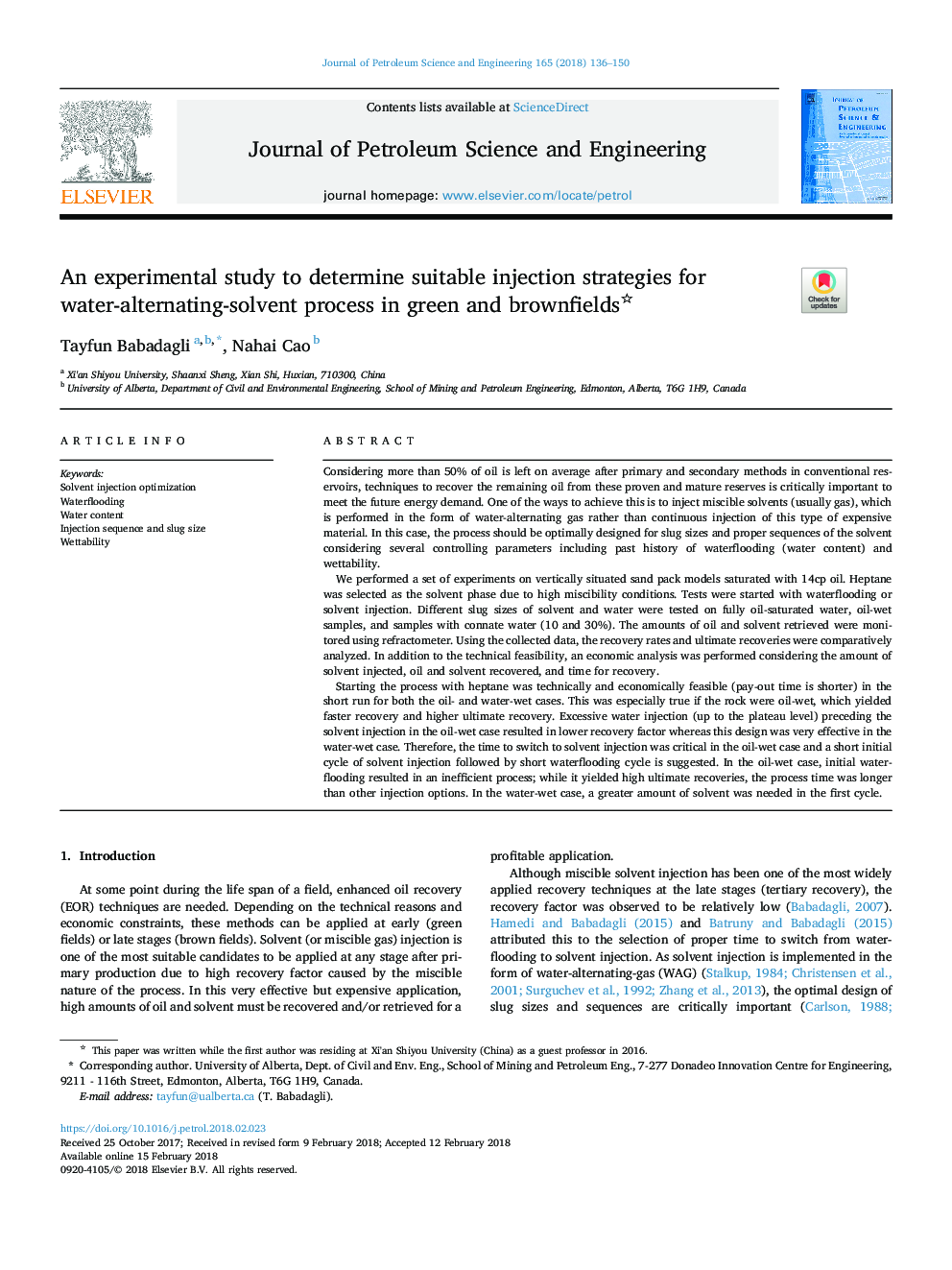| Article ID | Journal | Published Year | Pages | File Type |
|---|---|---|---|---|
| 8124999 | Journal of Petroleum Science and Engineering | 2018 | 15 Pages |
Abstract
Starting the process with heptane was technically and economically feasible (pay-out time is shorter) in the short run for both the oil- and water-wet cases. This was especially true if the rock were oil-wet, which yielded faster recovery and higher ultimate recovery. Excessive water injection (up to the plateau level) preceding the solvent injection in the oil-wet case resulted in lower recovery factor whereas this design was very effective in the water-wet case. Therefore, the time to switch to solvent injection was critical in the oil-wet case and a short initial cycle of solvent injection followed by short waterflooding cycle is suggested. In the oil-wet case, initial waterflooding resulted in an inefficient process; while it yielded high ultimate recoveries, the process time was longer than other injection options. In the water-wet case, a greater amount of solvent was needed in the first cycle.
Related Topics
Physical Sciences and Engineering
Earth and Planetary Sciences
Economic Geology
Authors
Tayfun Babadagli, Nahai Cao,
